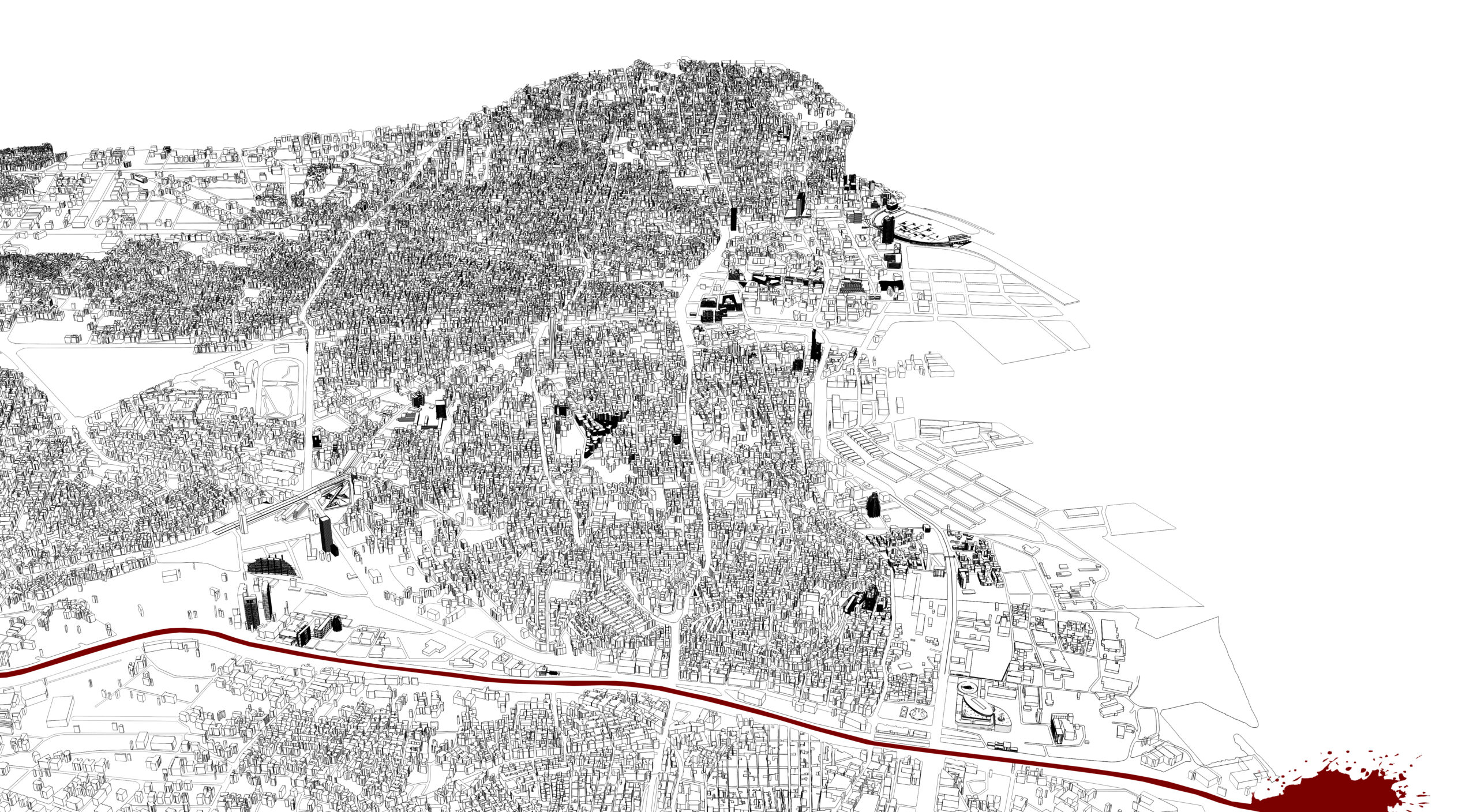
Toxic Grounds
Bernard Khoury
Curated by Yara Zein
Gallery 1
February 7 – August 23, 2026
For over two decades, Bernard Khoury has stood at the edge of the discipline, refusing its conventions, exposing its hypocrisies, and rebuilding its language from the ground up. He is one of the most provocative and influential voices to emerge from the post-war Beirut. His work is not about buildings. It is about what buildings reveal when they are stripped of symbolism and forced to speak.
This is his first exhibition in Iceland, and it is a confrontation. Installed across Gallery 1 at Listasafn Árnesinga, the exhibition unfolds through sound, moving image, and spatial storytelling. It offers no neutral ground. It draws you in and implicates you.
Khoury tells stories others are afraid to touch. Stories embedded in terrain marked by conflict, exile, surveillance, seduction. His artistic vision gives shape to territories that resist pacification, that do not lend themselves to clean resolutions or easy readings.
BO18 remains one of his most iconic and controversial statements. A nightclub dug into the former quarantine zone of Beirut. A site marked by epidemic, war, and political disappearance. Khoury chose not to conceal that legacy. He built into it. BO18 did not shock because of its form. It shocked because it exposed what others had worked hard to forget.
This is the logic that underpins the works in this exhibition. Machines of memory. Instruments of disturbance. These are not commemorative. They are operational. They move. They speak. They insist.
Khoury’s practice refuses nostalgia. It is seductive and brutal in equal measure. His installations activate space like a political act. They are not polite gestures. They are sharp, deliberate intrusions.
This exhibition marks a cultural event of real weight. It is rare for a voice like Khoury’s to enter a context so physically and historically different from his own. But here, on Icelandic ground, geologically violent and politically stable, the encounter becomes even more charged.
What does it mean to import work born of instability into a landscape shaped by natural force? What happens when the noise of Beirut’s haunted ground is allowed to echo in the silence of the Icelandic countryside?
This is not an architectural exhibition. It is not an aesthetic offering. It is an intrusion.
Born in Beirut (1968). He studied architecture at the Rhode Island school of Design (BFA 1990 / B.Arch 1991) and Harvard University (M.Arch 1993). He was awarded by the municipality of Rome, the Borromini Prize honorable mention given to architects under 40 years of age (2001), the Architecture + Award (2004), the CNBC Award (2008) and nominated for several awards including the Aga Khan award (2002 / 2004/ 2021), the Chernikov prize (2010) and the Mies van der Rohe Award (2021). He co-founded
the Arab Center for Architecture (2008), was a visiting professor in several universities including the Ecole Polytechnique Fédérale de Lausanne and L’Ecole Spéciale d’Architecture in Paris. He has lectured and exhibited his work in over 150 institutions, including solo shows at the Aedes gallery in Berlin (2003), the Spazio per l’architecttura Milano (2016) and numerous group shows including YOU prison at the Fondazione Sandretto in Torino (2008), the opening show of the MAXXI museum in Roma (2010), the Frac Architecture Biennale in Orleans (2018), the Oris House of Architecture in Zagreb (2020) and the Architecture Biennale of Seoul (2021). He was the architect and co-curator of the Kingdom of Bahrain’s national pavilion at the Venice Architecture Biennale (2014). Over the years he has developed an international reputation and a diverse portfolio of projects in over fifteen countries. Khoury was nominated by the French Ministry of Culture Chevalier des Arts et des Lettres (2020)

